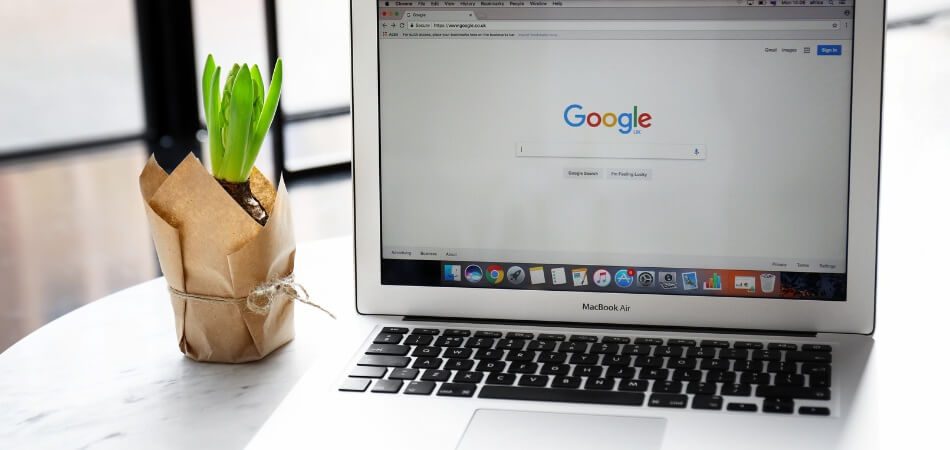Conference papers are important parts of academic work, often presented at major events and later shared online. Many readers wonder how to locate them easily, and the thought might cross your mind: how do I search for a conference paper in Google Scholar?
To search for a conference paper in Google Scholar, go to scholar.google. com, enter the paper title in quotes or use keywords with the author’s name, then filter by year or publication. Click the title or PDF link to access it. Use Advanced Search for more precise results.
Do you want to know more about the best ways to refine searches for accuracy? If you are curious, keep reading this article because it explains every step. Inside, you will find all the details you need about finding and understanding conference papers with ease.
How Do I Search for a Conference Paper in Google Scholar?
Searching for a conference paper is simple with Google Scholar. The platform works like Google but is built only for academic research. It provides access to conference papers, journal articles, and many other resources. By following these steps, you can quickly find reliable papers online.
1. Open Google Scholar
Go to Google Scholar on your browser. It looks like a clean page with a simple search box at the center, similar to Google. You don’t need an account to start searching, but signing in lets you save papers and create alerts for future reference.
2. Type the Paper Details
If you know the full paper title, type it inside quotation marks for accurate results. Example: “Deep Learning for Image Recognition”. If not, combine the author’s name, year, conference name, or related keywords. Example: Smith IEEE 2025 Machine Learning. This helps Google Scholar narrow down results quickly and effectively.
3. Use Filters
On the left side of the search results page, you’ll see filters to refine your search. If you know the year of the conference, adjust the year range. Example: set 2025–2025 for a 2025 conference. This filter reduces irrelevant results, saving time and giving precise, accurate outcomes.
4. Check the Results
Results usually show the paper’s title, author names, publication year, and sometimes the conference details. Links on the right often provide free access, like [PDF]. If not, click the paper title, which leads to the publisher’s site. Review results carefully to confirm you’ve found the exact paper you need.
5. Use Advanced Search (Optional but Powerful)
Google Scholar’s advanced search tool is very helpful when basic searching doesn’t provide accurate results. It lets you narrow your search using exact phrases, author names, conference titles, and other filters. This makes it easier to pinpoint the correct paper, especially if the title is common. Here’s how you can do it:
Title Field
Use “with the exact phrase” when entering the paper title. This ensures the system finds only papers that match perfectly. If you want only titles to be searched, choose the “in the title” option. This step removes unnecessary results, giving you more accurate and targeted research outcomes.
Publication Box
In the publication box, enter the name or acronym of the conference proceedings. For example, write Proceedings of IEEE ICML 2025. This helps focus results on that specific conference’s collection. It is particularly useful when conferences publish hundreds of papers, as it filters and refines your search efficiently.
Author Box
If you know the author, type their surname with the format author: “Surname.” Example: author: “Smith”. This narrows the search results to only that author’s papers. It is especially helpful when multiple researchers work on similar topics, allowing you to focus on work written by the same researcher.
Run Query
Once you’ve entered details, click Search to run the query. Always review the top results first, since Google Scholar sorts by relevance and citations. High-ranked results are often the most reliable. This way, you quickly find accurate matches without wasting time on less significant or unrelated research papers.
6. Extra Tips
If you can’t find the paper, try variations of the title or use additional keywords. Always include the conference year and name to narrow down your search. If it’s behind a paywall, check ResearchGate, university repositories, or the author’s website. You can also explore upcoming conferences for newer related papers.
Searching on Google Scholar is easy once you understand the process. Every step helps you move closer to the correct paper. Even small details like year filters or keywords can make searching simple. Always check results carefully to confirm the paper is exactly what you need.
How Do I Write a Strong Conference Paper Query?
Writing a strong conference paper query helps you find the right research. Google Scholar has special tools that allow you to search more precisely. Using proper terms, phrases, and filters saves you time and effort. The following steps explain how to build a query that works effectively.
Base Terms
Always begin with two or three important keywords connected to your topic. Don’t overload the search with long sentences or irrelevant words. Choosing strong terms makes results more targeted and helpful. This step helps narrow down thousands of papers into a manageable list. Picking good terms sets the foundation for strong results.
Exact Phrase
When you know a fixed phrase or paper title, put it in quotation marks. Example: “Deep Learning for Image Recognition.” This ensures Google Scholar finds only papers containing that exact phrase. Without quotes, the search may return unrelated results. Using this method guarantees greater precision and saves time in reviewing papers.
Add Field
Google Scholar includes a field labeled “Return articles published in.” Use this to limit searches to specific journals or conferences. Typing the name ensures results only come from that publication. This step prevents unrelated sources from appearing. Narrowing by publication helps you focus only on the right conference materials.
Add Author
Sometimes, it helps to search by author if you know them. Type author:”Surname” into the search bar for accurate filtering. This restricts results to that researcher’s work only. It’s very useful when many people publish similar research. This method ensures you find the exact author’s conference contributions quickly and clearly.
Set Years
Adjusting the date range keeps your search updated and relevant. You can use the “Since Year” option or set a custom range. For example, select 2020–2025 for recent works. This helps you avoid outdated results. Setting years is useful for following current trends or recent conference presentations.
Building a strong query helps you find better academic results. Each step improves the quality and relevance of your search. Small details like author filters or years make a huge difference. Always practice queries until you become confident in searching academic papers effectively.
What Types of Conference Papers Can You Expect at Google Scholar?
Google Scholar provides access to different types of papers presented at conferences. These papers can vary in length, focus, and purpose. Knowing the differences helps you read and use them better. A big part of using Google Scholar well is understanding conference papers, so you know how each type is presented in search results.
Full Papers
These are detailed studies that cover complete research projects. They usually have sections like introduction, methods, results, and conclusions. Most of the time, they are peer-reviewed and carry strong academic value. Researchers use them as solid references because of their complete structure and depth of information.
Short Papers
Often, conferences include shorter works that highlight early research or smaller studies. These papers are not as detailed but still share important findings. They may present ongoing projects that are still being developed. Even with fewer pages, they give useful insights and help researchers connect ideas.
Poster Papers
Conferences sometimes display research work as posters during specific sessions. The written record of these posters is usually published as short abstracts. They don’t provide every detail but summarize the study briefly. Poster papers are a good way to get quick snapshots of new ideas.
Workshop Papers
Many conferences hold workshops or symposia alongside their main sessions. Papers from these events may also be included in Google Scholar. They often explore specialized topics in smaller groups. These works are useful when you want insights from narrower discussions outside the main conference proceedings.
Demo Papers
Some conferences highlight demonstrations of new tools, software, or applications. These papers focus more on showing how something works rather than only on theory. They are especially important in fields like computer science and engineering. Researchers read them to learn about practical uses and new technology developments.
Review Papers
Certain conferences allow papers that summarize the current state of research. These are sometimes called review or survey papers. They give readers an overview of existing work in a field. Such papers are helpful for understanding trends, identifying gaps, and planning further research studies effectively.
Conference papers in Google Scholar come in many useful formats. Each type provides value depending on your research needs and questions. Understanding the differences makes searching easier and more productive. Always explore multiple paper types to gain stronger knowledge about your subject area.
How Do I Add Library Links For Conference Papers?
Google Scholar lets you connect your school or institution’s library directly. This makes it easier to get full-text access to conference papers. Once linked, you’ll see library access buttons appear beside search results. Following these steps ensures you don’t miss important research that’s available through your library.
Open Settings
Begin by opening Google Scholar in your browser and looking at the top-right corner. Click on the Settings option, usually shown with a gear icon. This will open a menu of choices where you can adjust how searches work. Accessing settings is the first step toward connecting library access.
Library Find
Inside the settings menu, look to the left-hand side and select Library Links. This section is where you can connect Google Scholar to your library. Choosing this option opens a search box that lets you find your institution. This is the main place to activate direct access to papers.
Search Name
Within the library links section, type the name of your institution. Once the name appears, select the box next to it. You may be able to choose more than one library if needed. Adding your institution ensures that Google Scholar knows which library subscriptions you can use.
Save Choice
After selecting your institution, scroll down and click Save to confirm. This step updates your Scholar account settings to include the chosen library. From now on, you will see a button such as Find it at [Library] beside results. Saving the choice ensures your settings remain active.
Use Button
When searching for conference papers, you’ll now notice new library buttons. These appear next to the paper’s title or alongside links. Clicking the button takes you to your institution’s login page or directly to the paper. Using these buttons makes accessing full-text versions simple and fast.
Adding library links makes research faster and much more convenient. It allows you to see papers your institution already provides access to. Many conference papers that looked locked before may now be available. Always use your library connections to get the most complete research results.
Which Search Operators Find a Conference Paper Fast?
Finding a conference paper quickly often depends on the way you search. Google Scholar allows you to use different operators to filter results. These tools can make a huge difference in saving time. By combining them, you can create searches that are both simple and powerful.
Phrase Match
Placing quotation marks around words or a phrase makes the search exact. For example, typing “Neural Network Models” will return only results with that phrase. Without quotes, the system may include unrelated content. Using this operator is very effective when you already know a paper’s title or exact wording.
In Title
Adding the intitle: command ensures your keyword must appear in the title. For example, intitle:robotics shows only papers with “robotics” in the title. This reduces distractions and increases accuracy. The operator works best when you want specific research papers. It’s a targeted way to focus only on relevant material.
Author Pick
If you know who wrote the paper, filter results by author. Use the format author:”Surname” to limit papers to that researcher. For example, author:”Patel”. This option is useful in fields with many contributors. It makes finding conference papers easier and ensures you see the correct author’s work.
OR Option
Sometimes, research papers use different terms for the same subject. To include both, use the OR operator. Example: renewable OR sustainable. This widens your search to show results with either term. The method works well when searching across related fields. It ensures you don’t miss useful conference papers.
Minus Term
Unwanted results can be removed by adding a minus before a word. Example: climate change -policy will remove papers mentioning policy. This keeps your results focused and saves time. It is helpful when a keyword overlaps with multiple fields. The minus operator is a quick way to filter out noise.
Search operators give you the power to refine your results. Each one has a special purpose that makes searching easier. Along with these tools, some readers may also explore a Google Scholar conference proceedings search guide to get better results. Always practice these methods to build stronger search habits over time.
Which Operator Cheat Sheets Improve Conference Paper Searches?
Searching for the right conference paper can sometimes feel slow if you don’t know the right tricks. Using operator cheat sheets makes your search faster and more exact. These tools help you find the exact papers you want without wasting time.
- Title Must: Using intitle:”keyword” makes sure the search results have your chosen word in the title, giving you more accurate and focused matches.
- Author Lock: Writing author:”Surname” limits results to work written by a specific person, which helps when you are searching for papers by certain researchers.
- Exact Title: Putting “Full paper title” in quotes gives you only the exact paper with that title, so you avoid scrolling through similar but unrelated results.
- Include Either: Writing term1 OR term2 allows the search to show results with either word, which is useful for finding related or alternative topics.
- Exclude Term: Adding -unwanted removes results with that word, making the list cleaner and helping you avoid reading papers that are not useful.
A few simple operator tricks can save you a lot of time and effort when searching for conference papers. Once you practice them, finding reliable results becomes much easier and less stressful.
What Examples Show Conference Paper Searches That Work?
Conference paper searches often feel confusing unless you know how to combine keywords and filters in smart ways. A few clear examples can make the process simple and more effective. These search styles will help you reach the papers you really need.
- Known Title: Typing “Attention Is All You Need” in quotes will directly give you the exact paper, and then you can explore the results linked to it.
- Topic Plus: Searching with “diffusion models” while setting the publication field shows research papers on that topic only, keeping the results more focused and useful.
- Author Focus: Using author: “Goodfellow” with a conference name filter shows you his work from that event, making it easier to track specific researchers.
- Title Filter: Writing intitle:”segmentation” along with a year range narrows your results to only recent papers, keeping your list relevant and updated.
- Follow Chain: Clicking “Cited by” under a paper leads you to newer research that references it, helping you follow the growth of that idea over time.
Smart search examples like these make research simpler and faster. Once you get used to them, you can find high-quality conference papers without wasting time on extra results.
How Can I Verify a Conference Paper Source?
Conference papers are widely available online, but not all sources are reliable. It is important to check whether the paper is genuine and properly published. Simple checks can help you avoid misleading versions or drafts. Following these steps makes sure you use trusted conference paper sources.
Publisher Check
Look at the conference publisher and the official proceedings page. Reliable publishers like IEEE, ACM, or Springer always provide proper links. If the paper is not on a recognized publisher’s site, it may not be the final version. Always start by verifying the publisher’s identity and source page carefully.
DOI Match
Every proper paper usually has a unique DOI number assigned. Check if the record includes a DOI and whether it leads to the official publisher’s site. A valid DOI confirms the paper’s authenticity. Fake or missing DOIs are signs of unreliable sources, so this step is very important.
Author Page
Many researchers keep updated profiles on their university pages or research platforms. Cross-check the paper through the author’s official page to confirm details. If the author lists the same paper there, it is usually genuine. This step also helps you see other works by the same researcher.
Version Note
Research papers may appear in draft, preprint, or final versions. Always prefer the final published version if it is available. Drafts might miss peer-review edits or corrections, while final versions are polished. Looking for the correct version ensures you rely on the most accurate research information possible.
Cite Count
Citation numbers often give a quick measure of credibility. A paper with citations from other researchers usually indicates some level of trust. Newer papers may have fewer citations, but completely uncited ones need careful checking. Looking at citations helps you decide if a paper is widely recognized.
Checking paper sources protects you from unreliable or incomplete information. Publisher pages and DOI numbers give strong signs of trust. Author profiles and correct versions improve confidence in the paper. Always verify these details to ensure you use dependable research in your work.
What Common Mistakes Hide Good Conference Paper Results?
Many people struggle to find the right conference papers because of small mistakes. These mistakes often block useful results from appearing in searches. Knowing what errors to avoid can make searching faster and more effective. Let’s look at the most common mistakes that hide good results.
- No Quotes: Forgetting to put a paper title inside quotation marks makes the results messy. Without quotes, Google Scholar searches each word separately, often returning unrelated items. Quoted titles give direct and precise matches. Always use quotes if you already know the exact paper title.
- Wrong Year: Overlooking year filters mixes old papers with new ones. Using the correct year range focuses results on the conference you want. Example: set 2025–2025 for that year’s event. Filters are simple but powerful tools to cut unnecessary clutter and keep your results very accurate.
- Broad Terms: Using very general terms like “learning” or “networks” floods the result list with irrelevant work. Adding specific keywords like “deep learning image recognition” creates targeted results. Broader searches often waste time, while sharper terms help you quickly find only useful conference papers in your results.
- Miss Acronym: Many conferences publish papers under well-known acronyms, like ICML or CVPR. Searching without trying these acronyms may hide relevant results. Always test both full names and short forms. This ensures you catch everything published and avoids missing papers that only appear under acronyms in Google Scholar.
- Ignore Versions: Each paper can appear in multiple versions, like drafts or publisher copies. Skipping the “All versions” link may hide free access copies. Some author-uploaded versions are openly available. Always check this link to find the widest options. Ignoring it means you might miss free, useful versions.
- Too Many Words: Adding very long sentences into the search bar weakens results. Google Scholar works best with focused terms, not entire sentences. Limit searches to keywords, authors, or titles. Keeping the query short makes the search engine return papers that truly match what you are looking for.
- No Field Use: Forgetting to use advanced fields misses focused results. Fields like “Return articles published in” narrow results to a conference. Author filters also cut down unrelated items. These tools help you skip irrelevant work quickly. Ignoring fields means your search may bring back far too much noise.
Searching for conference papers requires focus and smart use of search tools. Common mistakes make it harder to find the right material. Avoiding these errors saves time and improves accuracy. Always check your queries carefully to uncover the best results.
FAQs About How Do I Search for a Conference Paper in Google Scholar?
Google Scholar conference search often raises extra questions. Many people are unsure about what tricks, features, or steps make the process easier. These frequently asked questions give clear answers to help you search with more confidence.
Can I Search for a Paper Without Knowing the Title?
Yes, you can still find a paper even without the full title. Use keywords related to the topic, author, or conference name. Combining two or three details gives better results. Even partial information can help you locate the right paper.
How Do I Know if a Paper is Free to Read?
Look at the right side of the search results, where you may see [PDF] or [HTML] links. These often give free access to the paper. If no link is there, the paper might be behind a paywall. You can also check if the author uploaded it to their website.
Is Google Scholar Better Than a Normal Google Search?
Google Scholar is more focused on academic sources, unlike normal Google, which mixes blogs and random sites. It filters results to include conference papers, journals, and books. This makes it more reliable for research. For serious study, Scholar is always the better option.
Can I Save Papers I Find on Google Scholar?
Yes, you can save paper by signing into a free Google Scholar account. When you see a paper you want, click the star icon below it. Saved papers appear in your personal library. This helps you organize and revisit papers later without searching again.
How Do I Know If a Paper Is Popular or Trusted?
Check the citation count shown under the paper in search results. A high citation number means many researchers have used it in their work. Popularity alone is not quality, but it usually shows trust. This gives you a quick idea about the paper’s importance.
Can I Search for Papers in a Specific Language?
Yes, you can. After your search, use the settings to change the language or add specific words in that language. For example, type Spanish keywords to find Spanish papers. Language filtering makes results more targeted to your needs.
How Do Alerts Work on Google Scholar?
Alerts notify you when new papers match your chosen keywords. You can set them up by clicking the envelope icon on the results page. Once set, you will get emails with updates. This is a simple way to track new research without searching daily.
What If I Only Want Recent Papers?
You can set the year range on the left side of the results page. For example, select “Since 2022” to see only newer papers. This keeps your results fresh and avoids outdated research. Limiting the years helps when you want the latest information.
Can I Export References Directly From Google Scholar?
Yes, you can. Under each result, click the quotation mark icon. This shows different citation formats like MLA, APA, or Chicago. You can also export directly to citation tools. This saves time when building a reference list.
Does Google Scholar Show All Conference Papers?
You do not always find Google Scholar conference papers in a very wide range. Some smaller or local conferences may not appear there. Big names like IEEE, ACM, and Springer usually show up. If you can’t find something, try the official conference website as well.
Conclusion
Conference papers are valuable, but searching for them the wrong way wastes time. Knowing the right filters, operators, and paper types makes the whole process easier. Each method adds accuracy and ensures you don’t miss the most relevant papers.
The answer to how do I search for a conference paper in Google Scholar is simple: open Scholar, type the title in quotes or keywords, apply filters, use author or year ranges, and check advanced search. These steps quickly bring reliable and correct results.
Always check versions, avoid broad terms, and remember to use filters wisely. Make good use of library links, explore citations, and refine your queries. With these tips in mind, best wishes for smoother and smarter paper searching.











